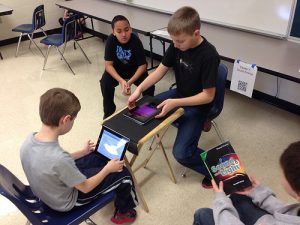After reading through the myriad of posts in the Anchored Instruction portion of module B several themes seemed to stand out. When discussing the Jasper Series videos the value of this type of teaching and learning was evident. My peers spoke to the abstract thinking that is an outcome of learning. In addition, the positive learning that occurs through collaboration, having an authentic purpose for learning, engaging students, a student centered and constructivist approach and scaffolded problem solving were all hilighted.

On the other hand, many also alluded to the possible drawbacks to using this style of teaching/learning. The lack of teacher understanding of how to use the videos effectively surfaced, as well as the problems with lack of technology training for educators, which may leave them at a disadvantage when attempting to incorporate anchored instruction using these videos or technology in general.Several peers also mentioned that these videoes were a bit outdated and that newer technology(ies) could provide the same type of anchored instruction. Virtual reality was suggested, as well as videos that are even more interactive and open-ended.

It was interesting to read that several peers were attempting to integrate anchored instruction in their own classrooms but tailoring it to meet both their own needs and the needs of their students. I think seeing the videos provided some with a springboard which they could then use to change or start to change their math program. If nothing else, the videos provided a new way to look at math instruction and although there would be a learning curve before fully integrating this type of instruction in a classroom, many felt that anchored instruction and using videos would be a valuable component of a student centered classroom.

I still have questions about evaluation/assessment as well as how to properly scaffold group work and collaboration. I believe in constructivist teaching/learning but I also understand that it is not a linear way to teach and learn and it takes a lot of work and flexibility in approach. This may not be comfortable for some educators and having a mentor to help them through developing a classroom with anchored instruction components would be beneficial.